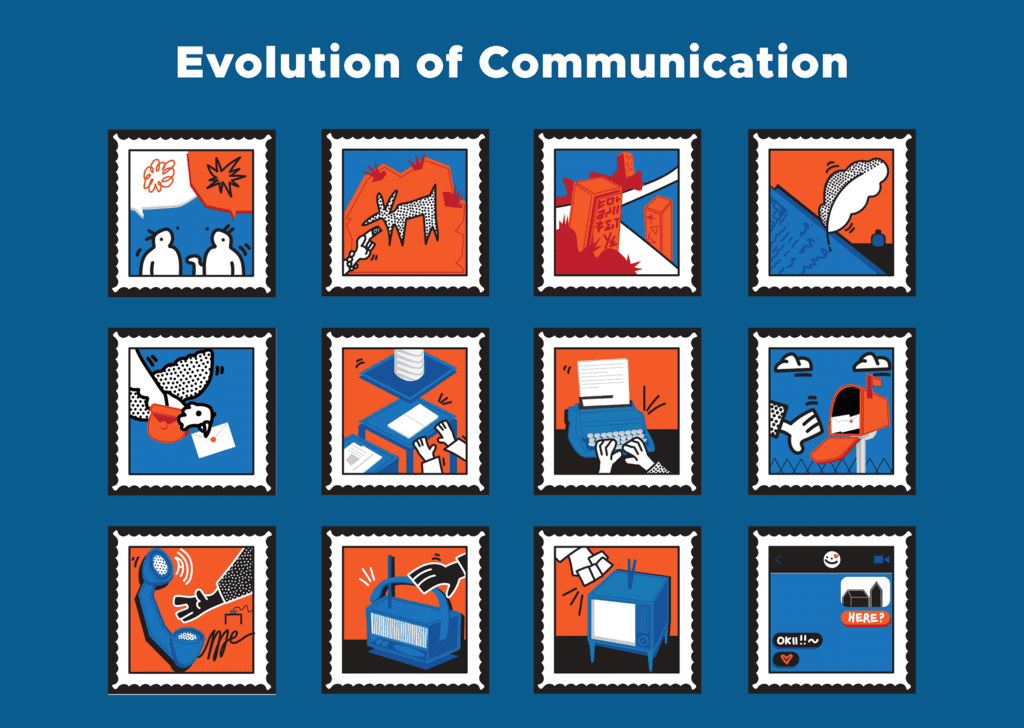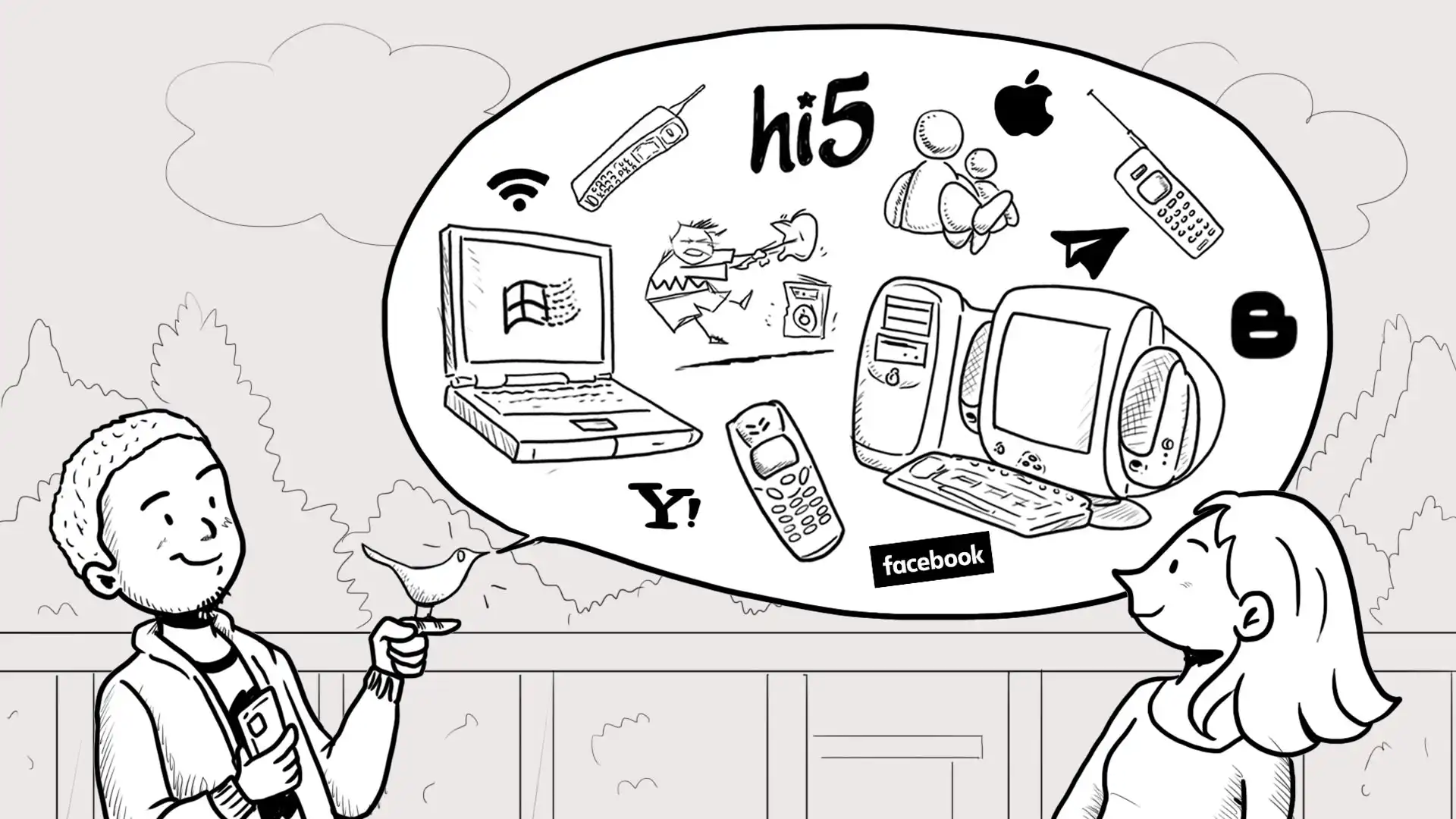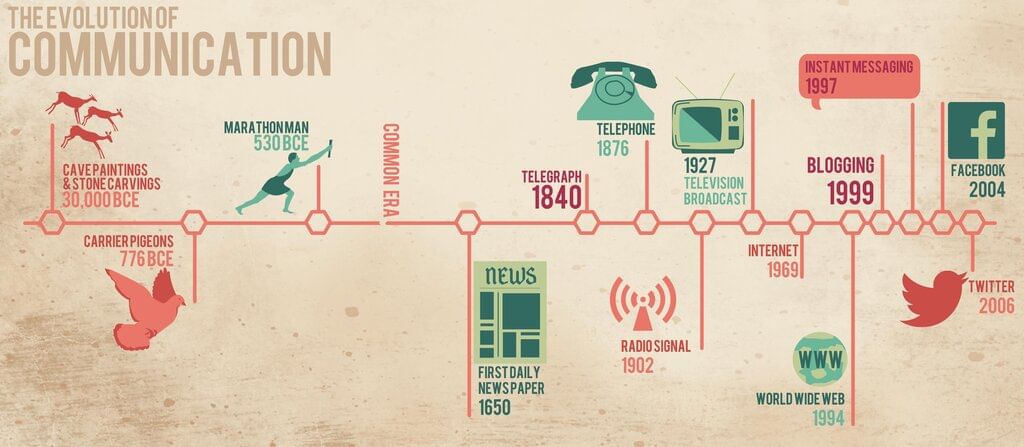Evolution of Communication Chapter Notes | Social Studies Class 5 ICSE PDF Download
| Table of contents |

|
| Introduction |

|
| What is Communication? |

|
| How People Communicated in the Past |

|
| Need for Writing |

|
| Evolution of Communication |

|
| Points To Remember |

|
| Glossary |

|
Introduction
Communication is how people share their thoughts, ideas, and messages with each other. Long ago, humans found simple ways to talk or send messages, like using signs or drawings. Over time, they invented new methods like writing, printing, and even machines to make communication faster and easier. This chapter tells us how communication has changed from old times to today, using tools like pigeons, telephones, and the Internet, and how these changes help people connect with each other across the world.

What is Communication?
- Communication means sharing information by talking, writing, or using actions.
- People share their thoughts and feelings with others through communication.
- Humans have created many ways to communicate over time.
How People Communicated in the Past

- Early humans did not know how to read or write.
- They used signs and actions to share messages.
- They beat drums to send messages over long distances.
- They used smoke or fire to send signals to others far away.
- Some animals, like birds, were trained to carry messages.
- Early humans drew pictures and paintings to share their ideas.
- Archaeologists found old cave paintings showing daily life, like hunting.
- These paintings are like a form of language because some tell stories.
- One painting in Bhimbetka, Madhya Pradesh, shows the lives of ancient people.
- Another painting in Serra da Capivara National Park, Brazil, shows a hunting scene.
Need for Writing
- Early humans became farmers and herders over time.
- They needed to keep records of their animals and crops.
- This need helped them invent writing to note things down.
- First, they used pictures to show words or ideas.
- Later, they started using alphabets and letters to make words and sentences.
- The ancient Egyptians made paper from papyrus plants to write on.
Fun Fact
The ancient Egyptians made paper from papyrus plants, which was woven from papyrus plants.
Evolution of Communication

Use of Pigeons
- In old times, people used messengers to carry messages to far places.
- They also used pigeons to send messages to distant locations.
- Pigeons were good messengers because they could find their way back home.
- Messages were written on paper and tied to the pigeons’ legs.
- The Persians were the first to train pigeons for sending messages.
- Romans used pigeons to send messages for their army more than 2000 years ago.
- In England, pigeons were used to carry football match results to nearby places.
- The Mughals in India also used pigeons to send messages.
- During World War I, over 100,000 pigeons were used to deliver messages.
- Pigeons can fly at an average speed of 77.6 mph, with the fastest speed being 92.5 mph.
Printing Press
- A printing press is a machine that prints books, magazines, and newspapers.
- Johannes Gutenberg, a German, invented the printing press around 1440.
- Before the printing press, books were written by hand, so they were few and costly.
- Only rich people could buy books because they were very expensive.
- The printing press made books cheaper and easier to produce.
- After the printing press, books became available to more people.
- Even poor people could now read books because they cost less.
- Printing newspapers also helped spread information to everyone.
Postal System
- A postal system is a way to send written messages, like letters or parcels.
- The modern postal system started in the 19th century.
- It allowed people to send letters or parcels within the country or to other countries through post offices.
- The highest post office is in Hikkim, Himachal Pradesh, India, at 4,700 meters high.
Telegraph and Telephone
- The telegraph and telephone made communication faster and easier.
- A telegraph sends messages using electrical signals through wires.
- Samuel F.B. Morse and Sir Charles Wheatstone invented the telegraph in 1835.
- Messages sent by telegraph were called telegrams and used Morse Code.
- Morse Code uses dots and dashes to represent letters and numbers.
- The telegraph made it faster to send messages and reduced travel for messengers.
- The telephone lets people talk to each other from far away.
- Alexander Graham Bell invented the telephone in 1876.
- The telephone is a simple and cheap device to use for communication.
- It became the most popular way to communicate in history.
- A fax machine connects to a telephone to send written messages.
- Now, telephones are mobile, so people can carry them anywhere.
- People can also send short messages called SMS using mobile phones.
- Today, the use of telegraphs has decreased because of telephones, fax machines, and the Internet.
Radio and Television
- Radio and television were invented in the early 20th century.
- They share information or news with many people at the same time.
- They are also a big source of entertainment for people.
- Even today, radio is used to make announcements.
- Jagadish Chandra Bose, an Indian scientist, invented the radio two years before G. Marconi, who later got credit for it.
Computers and the Internet
- A computer is a device that processes, stores, and shows information.
- People use computers every day for many tasks.
- The Internet connects computers all over the world into a big network.
- In the early 1990s, more homes started using the Internet.
- The Internet made communication easier with emails, websites, blogs, social networks, video chats, and voice-over-Internet calls.
- The Internet helps with more than just communication—it’s used for shopping, paying bills, booking tickets, and other activities.
- With the Internet, people can book tickets from home, like flight tickets.
- However, the Internet has also increased cybercrimes, so people must use it carefully.
Satellites
- Satellites are machines sent into space using rockets.
- They move around the Earth and send or receive signals.
- They help send telephone, television, and computer signals around the world.
- Satellites let us watch live events, like a cricket or football match, from anywhere.
- They also send images to help predict weather and study climate changes.
- There are over 2,000 communication satellites around Earth, used by private and government groups.
Fun Fact
- Pigeons can fly at an average speed of 77.6 mph. The fastest recorded speed is 92.5 mph.
- The first book to be printed was Johannes Gutenberg’s Bible.
- The highest post office in the world is in Hikkim, Himachal Pradesh, India, at a height of 4,700 meters.
- Messages sent by telegraph could be delivered quickly due to the telegraph, reducing the physical travel of messengers to a great extent.
- The Indian scientist Jagadish Chandra Bose invented the radio two years before G. Marconi, who later got the credit for it formally.
Points To Remember
- Communication is the sharing of information between people.
- Farmers and herders needed writing to keep records, which led to its invention.
- In the past, pigeons were used to send messages to faraway places.
- The printing press made books and information available to more people.
- The modern postal system started in the 19th century for sending letters and parcels.
- The telegraph and telephone made communication much faster and easier.
- Radio and television were invented in the early 20th century for news and entertainment.
- Computers and the Internet changed how people communicate around the world.
- Satellites help send and receive information to any part of the world.
Glossary
- Gestures: Movements of hands, arms, or head to show ideas.
- Expedition: A trip taken by a group of people for a special reason.
- Transmitting: Sending something.
- Enable: Make something possible.
- Cyber: Related to computers or computer networks.
|
88 docs|20 tests
|
FAQs on Evolution of Communication Chapter Notes - Social Studies Class 5 ICSE
| 1. What are the early forms of communication? |  |
| 2. How did the invention of language and writing change communication? |  |
| 3. What were some early methods of sending messages? |  |
| 4. What are some modern inventions that have changed communication? |  |
| 5. Why is communication important? |  |















